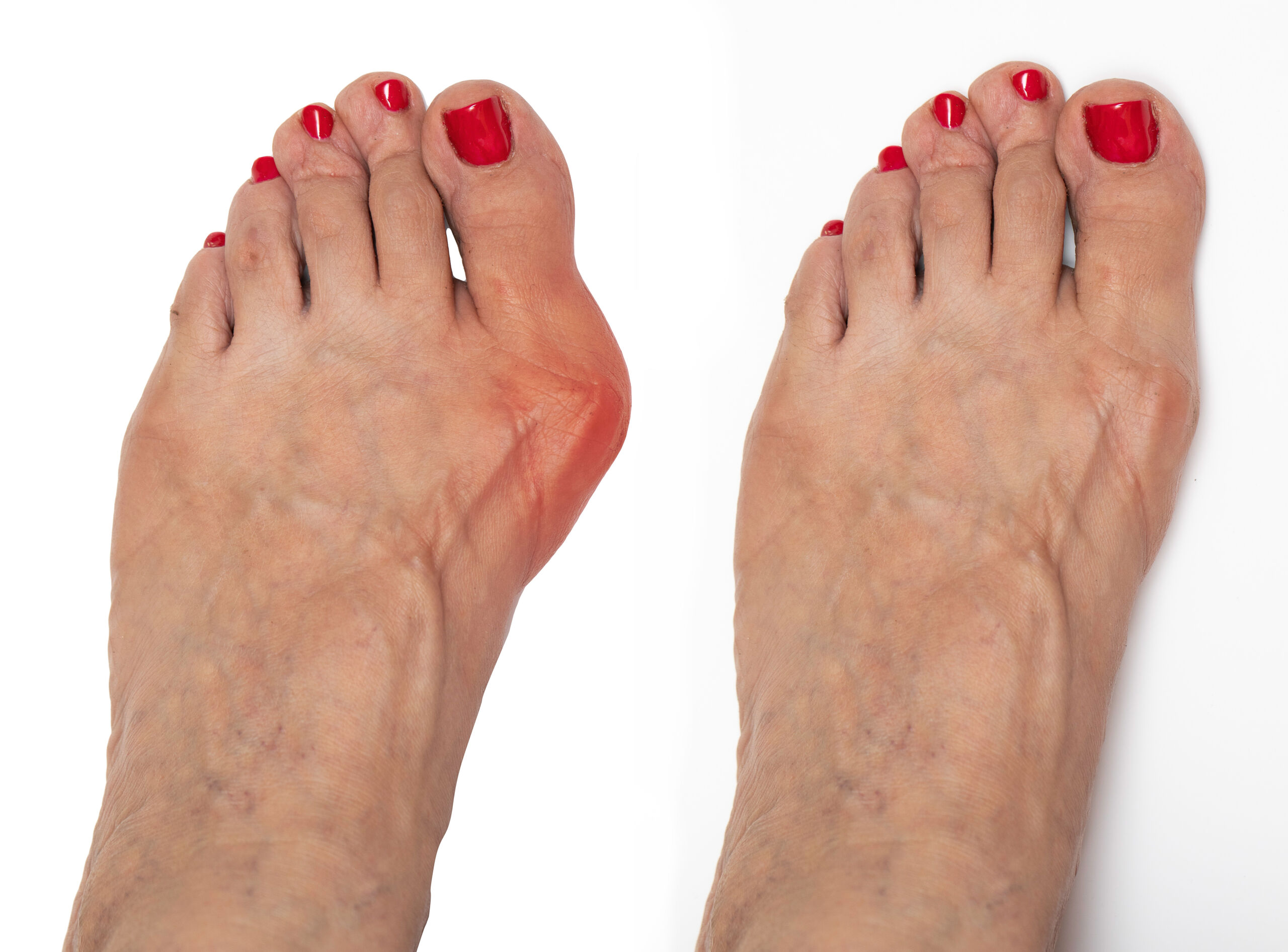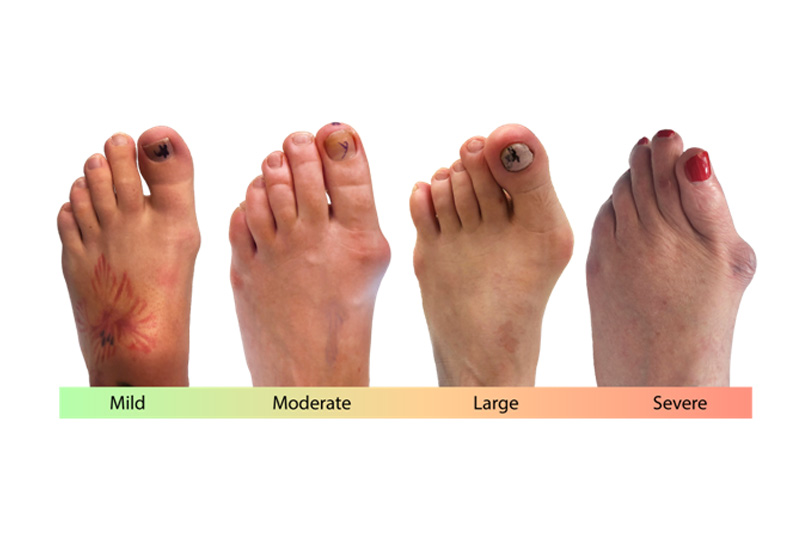Nursing Paper Example on Bunion: Understanding Causes, Symptoms, Diagnosis, Treatment, and Patient Education
Nursing Paper Example on Bunion: Understanding Causes, Symptoms, Diagnosis, Treatment, and Patient Education
Causes
Bunions develop due to a combination of genetic predisposition and external factors. One of the primary causes is an inherited foot type that makes individuals more susceptible to developing bunions. Certain foot shapes, such as having a low arch or flat feet, can contribute to abnormal foot mechanics, leading to the misalignment of the big toe joint over time.
External factors also play a significant role in bunion formation. Wearing tight, narrow shoes, particularly high heels, can exert excessive pressure on the big toe joint, forcing it out of alignment. Prolonged wearing of ill-fitting footwear can exacerbate this pressure, contributing to the development and progression of bunions.
Foot injuries and trauma can also increase the likelihood of developing bunions. Damage to the structures around the big toe joint, such as ligaments and tendons, can disrupt the normal alignment of the toe, leading to the formation of a bunion.
Additionally, certain medical conditions, such as inflammatory joint diseases like rheumatoid arthritis, can predispose individuals to developing bunions. These conditions can cause inflammation and damage to the joints, including the big toe joint, contributing to bunion formation.
Furthermore, repetitive stress on the feet, such as participating in activities that involve excessive pressure on the toes, can also increase the risk of developing bunions over time. Athletes and individuals who engage in activities that involve repetitive movements of the foot may be more susceptible to developing bunions due to the constant stress placed on the toe joint.
Overall, bunions develop as a result of a complex interplay between genetic factors, foot structure, footwear choices, foot injuries, and underlying medical conditions. Understanding these contributing factors is crucial for effective prevention and management of bunions. (Nursing Paper Example on Bunion: Understanding Causes, Symptoms, Diagnosis, Treatment, and Patient Education)
Signs and Symptoms
Bunions present with various signs and symptoms, ranging from mild discomfort to significant pain and functional impairment. The most prominent sign of a bunion is the visible bump or protrusion at the base of the big toe. This bump is caused by the misalignment of the big toe joint, which forces the bone to protrude outward, often creating a noticeable deformity.
Individuals with bunions commonly experience pain and tenderness around the affected joint. This discomfort may be exacerbated by pressure from footwear or movement of the toe. The pain can range from mild to severe and may interfere with daily activities such as walking or standing for extended periods.
Swelling and inflammation are also common symptoms of bunions. The soft tissues around the big toe joint may become swollen and tender due to irritation and friction caused by the misaligned toe rubbing against shoes. In some cases, the skin overlying the bunion may become red and irritated, further exacerbating discomfort.
As bunions progress, individuals may notice changes in the alignment of their toes. The big toe may begin to drift towards the second toe, causing overlapping or crowding of the toes. This can lead to the development of corns and calluses on the affected toes, as well as discomfort and difficulty finding shoes that fit properly.

In severe cases, bunions can cause a limited range of motion in the affected toe joint, making it difficult to bend or flex the toe. This restriction in movement can further impact mobility and may contribute to gait abnormalities.
Overall, the signs and symptoms of bunions can vary in severity and may worsen over time if left untreated. Early recognition and appropriate management are essential for alleviating discomfort and preventing further complications associated with this common foot deformity. (Nursing Paper Example on Bunion: Understanding Causes, Symptoms, Diagnosis, Treatment, and Patient Education)
Etiology
The development of bunions, known medically as hallux valgus, is multifactorial and influenced by a combination of genetic predisposition, structural abnormalities, and external factors.
Genetic factors play a significant role in bunion formation, with individuals having a family history of bunions being more likely to develop this condition. Inherited foot types, such as having a low arch or flat feet, can contribute to abnormal foot mechanics, leading to the misalignment of the big toe joint over time. Genetic factors may also influence the shape and structure of the bones in the foot, predisposing certain individuals to bunions.
Structural abnormalities in the foot can also contribute to the development of bunions. Conditions such as excessive pronation (rolling inward) of the foot, a long second toe, or a tight Achilles tendon can alter the biomechanics of the foot, placing increased stress on the big toe joint and leading to its misalignment.
External factors, particularly footwear choices, play a crucial role in bunion development. Wearing tight, narrow shoes, especially high heels, can exert excessive pressure on the big toe joint, forcing it out of alignment over time. Prolonged wearing of ill-fitting footwear can exacerbate this pressure, contributing to the development and progression of bunions.
Additionally, foot injuries and trauma can increase the risk of developing bunions. Damage to the structures around the big toe joint, such as ligaments and tendons, can disrupt the normal alignment of the toe, leading to the formation of a bunion.
Overall, bunions develop as a result of the interplay between genetic predisposition, structural abnormalities, and external factors such as footwear choices and foot injuries. Understanding these etiological factors is essential for implementing effective preventive measures and treatment strategies for bunions. (Nursing Paper Example on Bunion: Understanding Causes, Symptoms, Diagnosis, Treatment, and Patient Education)
Pathophysiology
The pathophysiology of bunions involves a complex interplay of biomechanical changes, structural abnormalities, and inflammatory processes that ultimately result in the characteristic deformity of the big toe joint.
Bunions typically develop gradually over time, beginning with alterations in foot biomechanics. Factors such as excessive pronation (rolling inward) of the foot, a long second toe, or a tight Achilles tendon can disrupt the normal alignment of the foot and place increased stress on the big toe joint. This increased stress leads to the gradual displacement of the big toe towards the second toe, resulting in the formation of a bunion.

As the big toe deviates laterally, the joint at its base becomes misaligned, causing the bones to protrude outward and form a bony prominence. This misalignment alters the distribution of weight across the foot, leading to further deformity and instability in the joint.
The structural changes associated with bunions also affect the surrounding soft tissues, including the ligaments, tendons, and joint capsule. These tissues become stretched and strained as they attempt to accommodate the misaligned joint, leading to inflammation, swelling, and pain.
Chronic inflammation of the soft tissues surrounding the bunion contributes to the development of secondary symptoms such as redness, tenderness, and swelling. Additionally, the constant friction and pressure from footwear can lead to the formation of corns and calluses over the bunion, further exacerbating discomfort.
Over time, untreated bunions can progress and become more severe, impacting the individual’s ability to walk, stand, and engage in daily activities. Severe bunions may also increase the risk of developing complications such as bursitis, arthritis, and hammertoe deformities.
Understanding the pathophysiology of bunions is crucial for developing effective treatment strategies aimed at addressing the underlying biomechanical abnormalities and inflammatory processes contributing to the condition. (Nursing Paper Example on Bunion: Understanding Causes, Symptoms, Diagnosis, Treatment, and Patient Education)
DSM-5 Diagnosis
The Diagnostic and Statistical Manual of Mental Disorders, Fifth Edition (DSM-5), does not provide specific diagnostic criteria for bunions, as they are a physical rather than psychiatric condition. However, healthcare providers may use clinical assessment and imaging studies to diagnose and evaluate the severity of bunions.
Clinically, bunions are diagnosed based on physical examination and medical history. Healthcare providers typically assess the appearance of the foot, looking for characteristic signs such as a visible bump at the base of the big toe and the deviation of the big toe towards the second toe. They may also palpate the affected area to assess for tenderness, swelling, and range of motion in the affected joint.
Imaging studies, such as X-rays, may be ordered to evaluate the severity of the bunion deformity and assess the alignment of the bones in the foot. X-rays can also help healthcare providers identify any underlying structural abnormalities or joint damage associated with the bunion.
The severity of bunions is often classified using the Hallux Valgus Angle (HVA) and the Intermetatarsal Angle (IMA), which are measured on X-rays. The HVA measures the angle between the first metatarsal bone and the proximal phalanx of the big toe, while the IMA measures the angle between the first and second metatarsal bones. These measurements help healthcare providers determine the degree of misalignment and deformity in the big toe joint.
Although bunions do not have specific DSM-5 diagnostic criteria, healthcare providers may use clinical assessment and imaging studies to diagnose and classify the severity of the condition. This information guides treatment decisions and helps healthcare providers develop personalized management plans for individuals with bunions. (Nursing Paper Example on Bunion: Understanding Causes, Symptoms, Diagnosis, Treatment, and Patient Education)
Treatment Regimens and Patient Education
Treatment for bunions aims to alleviate symptoms, slow the progression of the deformity, and improve foot function. The management of bunions typically involves a combination of conservative measures and, in some cases, surgical intervention. Patient education plays a crucial role in the effective management of bunions, empowering individuals to make informed decisions about their care and adopt lifestyle modifications to promote foot health.
Conservative Treatment:
- Footwear Modification: Encouraging patients to wear wide, comfortable shoes with a spacious toe box can help reduce pressure on the bunion and alleviate symptoms. Avoiding high heels and tight, narrow shoes can prevent further irritation and deformity.
- Orthotic Devices: Custom orthotic inserts or over-the-counter shoe inserts can provide support and cushioning, improving foot mechanics and reducing pain associated with bunions. These devices can help distribute pressure more evenly across the foot and promote proper alignment.
- Padding and Taping: Using padding or moleskin over the bunion can help reduce friction and protect the affected area from irritation. Taping the big toe to gently realign it and relieve pressure on the bunion may also provide temporary relief.
- Medications: Over-the-counter nonsteroidal anti-inflammatory drugs (NSAIDs), such as ibuprofen or naproxen, can help alleviate pain and reduce inflammation associated with bunions. Topical analgesic creams or gels may also provide temporary relief.
- Physical Therapy: Specific exercises and stretches prescribed by a physical therapist can help strengthen the muscles and improve flexibility in the foot, promoting better foot mechanics and reducing symptoms of bunions.
Surgical Intervention:
In cases where conservative measures fail to provide adequate relief or the bunion deformity is severe, surgical intervention may be considered. Bunion surgery, also known as bunionectomy, aims to realign the bones of the big toe joint, remove excess bone and soft tissue, and correct any structural abnormalities contributing to the deformity.
Patient Education:
- Foot Care: Educating patients about proper foot care practices, including regular toenail trimming, moisturizing, and inspecting the feet for signs of irritation or infection, can help prevent complications such as ingrown toenails and ulcers.
- Footwear Selection: Advising patients to choose footwear with adequate toe space, low heels, and good arch support can prevent exacerbation of bunions and promote foot comfort and health.
- Activity Modification: Encouraging patients to engage in low-impact activities that do not aggravate bunion symptoms, such as swimming or cycling, can help maintain overall fitness while reducing stress on the feet.
- Weight Management: Emphasizing the importance of maintaining a healthy weight through proper diet and regular exercise can help reduce pressure on the feet and prevent the progression of bunion deformities.
- Regular Follow-up: Stressing the importance of regular follow-up appointments with healthcare providers to monitor the progression of bunions, assess treatment effectiveness, and make adjustments to the management plan as needed.
(Nursing Paper Example on Bunion: Understanding Causes, Symptoms, Diagnosis, Treatment, and Patient Education)



